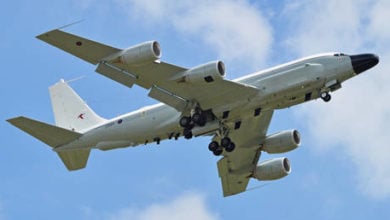The Global Food Crisis Will Be One of Affordability

SUkraine’s traditional role as a breadbasket has been restored since 1991 after the disintegration of the Soviet Union. More than 55% of Ukraine’s land area is “farmable” and it has some of the most productive soils in the world. The USDA estimates that Ukraine accounts for 4% of the world’s corn and wheat supply, 7% of its barley and 31% of its sunflower oil.
Global food supply is being impacted by the large scale of Ukrainian crop production. But it’s not only the export of so much of this wheat. Ukraine now ranks 5th in world wheat exports and supplies almost 10% of all global wheat exports. Ukrainian farmers are now contributing nearly 15% to global wheat exports. Agricultural products are Ukraine’s largest export and were valued at nearly $70 billion in 2021.
Of particular concern is the destination of some of Ukraine’s agricultural exports. Bangladesh, Egypt (and Indonesia) are the top buyers of wheat. They all have rapidly growing populations, limited financial resources, and limited ability to deal with shortages. This is not as a big of a concern for Ukraine’s corn exports, as China is its main buyer and has a surplus of corn.
Agriculture markets deal with significant reductions of crop supplies caused by weather-related problems. This is mainly because droughts are common. Weather-related supply “shocks” can be rather large. The 2012 drought in the U.S. Corn Belt saw corn production drop by more than 1.6 billion bushels, compared with the year before. The global corn supply decreased by four percent. Although the price of corn rose, there wasn’t a major food shortage. Reserve stocks were reduced, use was cut and trade reshuffled. Acreage was also increased quickly.
It is unclear whether or not the global impact of Ukraine’s conflict on grain supplies will be comparable to severe droughts. The potential exists for it to happen. A drought usually does not wipe out all of the crop acreage in major producing countries. The timing of Russian invasion is crucial. The planting window for spring crops in Ukraine is basically the same as it is in the U.S. Corn Belt—April and May. It was not difficult to see how the conflict would affect the Ukrainian spring crop planting season. The fear was that little, or even none, of Ukraine’s spring crops would be planted.
Ukrainian farmers currently face many challenges. It is unlikely that spring crops will be planted in areas where there are active fighting. The fighting in other parts of the country has not caused any significant problems. It is difficult to find fuel, labour, or other inputs for crops, including fertilizer, due to severe shortages. It is hard to believe how many Ukrainian farmers took up arms in fighting for their country, right at the beginning of the prime planting period. Some areas still have abandoned mines.
Farmers’ natural resourcefulness is an argument against the pessimistic viewpoint. Social media has shown us that Ukrainian farmers are very resourceful when it comes to stealing armored and tanks from Russia. This is a good reason to be optimistic, given that the Russian forces have been pulled back from the territories of the north. This has meant that the fighting is not threatening large swathes of Ukrainian crop yield. It is important to remember that war is unpredictable. Things could change quickly over the next few weeks. Plus, heavy fighting continues in the eastern and southern regions of Ukraine, and this contains some important crop producing regions—and, importantly, the major ports through which Ukraine ships its crops to the world.
The Ukrainian Agricultural Ministry surprised many by saying that it expects 70% of spring crops to be planted, and up to 80% if “de-mining” is completed in northern areas previously occupied by Russia. Although this may seem optimistic, it is important to remember that this perspective should not be ignored. While all of Ukraine’s spring crops are obviously not going to get planted, this suggests the worst-case scenarios of just a few weeks ago are not likely to happen. I think it is now safe to assume that at least half of Ukraine’s spring crops will be planted, and I will not be surprised if two-thirds or more is planted. Planting crops is a favorite pastime of farmers across the globe. They will find a way to do it if there’s a way.
Even if I’m right to be guardedly optimistic about Ukrainian farmers this spring, there is still a long ways to go in terms of getting their crops out of the field. In June, the winter wheat harvest begins. The fall harvest of spring-planted crops follows. There are many things that can go wrong when you live in war-torn areas.
There is also the problem of shipping the crop out of country, even if it has been produced. This could prove to be the main bottleneck. The Black Sea region of southern Ukraine is the main point of international shipping. This situation is expected to continue as long as there is war. This area is difficult to obtain insurance for shipping. This example shows how an often overlooked part of commercial business transactions has major economic impacts. While there is progress in routing crop exports via truck and rail from Ukraine, it is much more costly than ocean freight and offers a smaller capacity.
Is the global food crisis caused by Russia-Ukraine conflict causing a severe shortage of foodstuffs? Based on what I see today, I don’t believe that is the case. Global grain markets are sending messages to consumers and producers to adjust, which is why the prices have risen. The shortfall in Ukrainian production won’t be so severe if Ukrainian farmers can get their crops harvested and planted as they seem to.
The world might avoid an acute food shortage, but there will likely be food insecurity around the globe. Ukrainian (and Russian-made) wheat imports have become a mainstay in many developing countries of Africa and Middle East. The grain market’s job is to reduce demand and provide smaller quantities of supply, so someone must be priced out. This is usually the case for those who are poorer in import countries. This is not good news for millions of people living in poverty around the globe or the stability and security of political parties in less-developed nations. David Beasley, executive director of the U.N. World Food Program, says that the war in Ukraine is turning “the breadbasket of the world to breadlines.” The situation certainly deserves careful monitoring and the provision of as much help from rich countries as can be summoned.
We cannot forget about the important role Mother Nature plays in this. This is the summer that the entire world requires good weather conditions in key crop-producing areas across the globe.
Read More From Time





